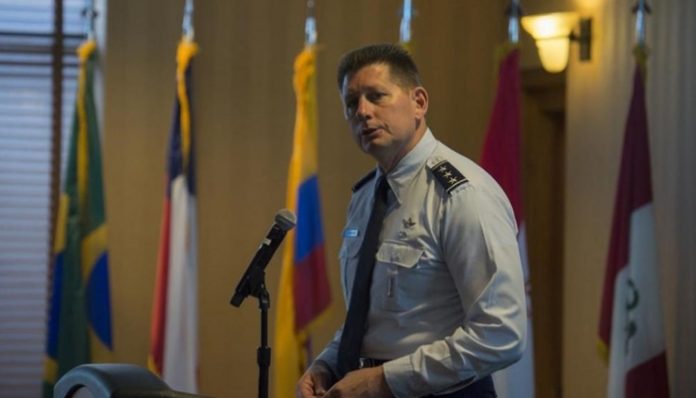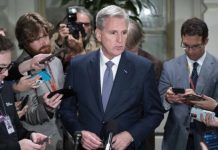
Feb. 7 (UPI) — A Department of Defense report submitted to Congress this week was light on detail, but emphasized the newly created branch’s commitment to minimizing cost and bureaucracy.
The full report, obtained by Air Force Magazine, emphasizes that Space Force will — as the legislation that created it requires — rely primarily on existing military personnel and funding.
The document, which was required under the fiscal 2020 National Defense Authorization Act that created Space Force, will continue to be adapted until the expected release of a final version in May.
“DOD is focused on creating a structure that removes traditional layers of bureaucracy while maintaining clear lines of authority, responsibility, and accountability. The successful establishment of the Space Force is vital to the continued ability of the United States to compete, deter, and win in an era of great power competition,” Air Force Secretary Barbara Barrett wrote in the document.
The NDAA text directs officials to pull from existing military personnel, and U.S. Space Force Vice Commander Lt. Gen. David Thompson, who also still serves as a uniformed member of the USAF, said during a press briefing this week that there currently are 6,000 Air Force personnel previously assigned to Air Force Space Command, who are now assigned to the Space Force.
After 2021, when personnel in key Air Force Space Command roles have completed the transfer to Space Force, the branch will begin pulling personnel from the Army and Navy.
The branch should have 16,000 members once all transfers are complete.
The plan creates an Office of Chief of Space Operations to oversee human capital and logistics, operations and plans, programs, requirements and analysis.
It creates some new administrative roles, including the vice chief of space operations, who will support Chief of Space Operations Gen. John Raymond on the Joint Requirements Oversight Council.
Other organizational details are still to be determined and will be the subject of additional reports scheduled for release this spring.
It’s not even clear yet what troops in the new branch — which released its new but familiar-looking logo at the end of January — will be called.
But one name is off the table.
Thompson told reporters Space Force is considering crowdsourcing ideas for service members’ names, but they definitely won’t be called “space men.”





